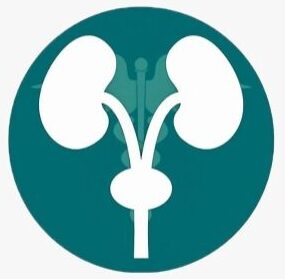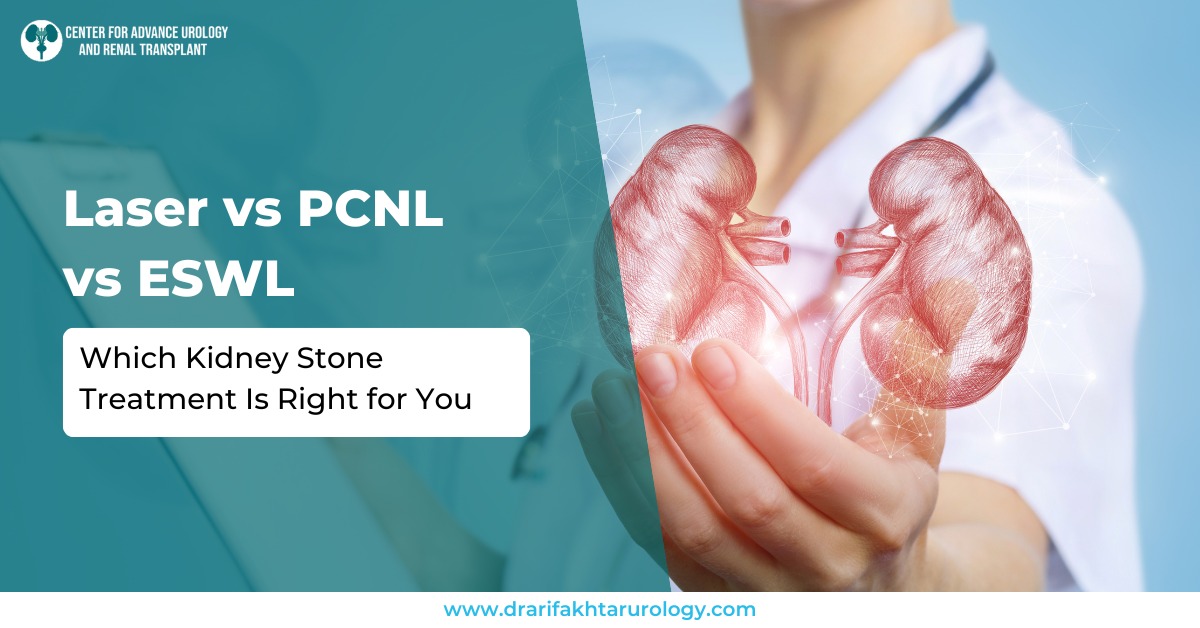Kidney stones can be painful, disruptive, and in some cases, medically urgent. Fortunately, advances in urology have led to several effective kidney stone treatment options, including laser surgery, PCNL, and ESWL. However, choosing the best treatment for kidney stones depends on various factors—stone size, location, patient health, and personal preferences.
This article provides a comprehensive comparison of Laser vs PCNL vs ESWL, helping patients and caregivers understand which procedure may be most suitable.
Overview of Kidney Stone Treatments
Modern kidney stone treatment options aim to remove stones while minimizing discomfort and preserving kidney function. These procedures range from minimally invasive to more complex surgical interventions. Understanding their differences is crucial to making an informed decision.
1. ESWL: Shock Wave Therapy
What It Is:
Extracorporeal Shock Wave Lithotripsy (ESWL) uses sound waves to break kidney stones into smaller fragments that can pass naturally through urine.
Clinical Use:
Ideal for stones smaller than 2 cm, especially those located in the kidney or upper ureter.
Pros:
- Non-invasive kidney stone removal
- Outpatient procedure
- Minimal recovery time
Cons:
- Not suitable for larger or hard stones
- May require multiple sessions
- Variable ESWL treatment success rate depending on stone composition and location
2. Laser Lithotripsy
What It Is:
This method uses a thin scope inserted through the urethra to locate the stone, which is then broken using a laser beam. It’s widely used for small to medium-sized stones.
Clinical Use:
Works well for stones located anywhere along the urinary tract.
Pros:
- No incisions
- High success rate
- Precise targeting with minimal tissue damage
Cons:
- Requires anesthesia
- Some post-procedure discomfort
Many hospitals now offer laser lithotripsy for kidney stones as a primary intervention, particularly for ureteral stones.
3. PCNL: Percutaneous Nephrolithotomy
What It Is:
A more invasive procedure involving a small incision in the back to access and remove large or complex stones directly from the kidney.
Clinical Use:
Best for stones larger than 2 cm or those resistant to other treatments.
Pros:
- High stone clearance rate
- Effective in one session
- Preferred for staghorn or clustered stones
Cons:
- Invasive
- Requires hospitalization
- Longer recovery period
The PCNL procedure for kidney stones is typically recommended when less invasive methods are unlikely to succeed.
Comparative Summary: Laser vs PCNL vs ESWL
| Aspect | ESWL | Laser Lithotripsy | PCNL |
| Invasiveness | Non-invasive | Minimally invasive | Invasive |
| Recovery | Quick | Moderate | Longer |
| Stone Size | <2 cm | Small–Medium | >2 cm |
| Anesthesia | Not always required | Required | Required |
| Effectiveness | Moderate | High | Very high |
| Pain Level | Low | Moderate | Moderate–High |
| Setting | Outpatient | Outpatient or short stay | Inpatient |
Understanding the difference between laser and ESWL also helps patients distinguish between precision-based treatment versus external shockwave therapy.
Cost Considerations
The cost of kidney stone treatment in India varies by procedure:
- ESWL: Typically lower cost due to outpatient setup
- Laser lithotripsy: Moderate, depending on hospital and equipment
- PCNL: Higher cost due to surgical resources, hospital stay, and post-op care
Patients should also consider insurance coverage and post-procedure follow-ups when evaluating total expenses.
Choosing the Right Procedure
When asking which kidney stone procedure is least painful, ESWL usually ranks highest due to its non-invasive nature. However, it’s not always effective for all stone types.
Decision Factors:
- Stone size and composition
- Location in the urinary tract
- Patient’s medical history
- Risk of recurrence
- Physician recommendation
There is no single “best” procedure. The best treatment for kidney stones is one tailored to the patient’s clinical profile, guided by imaging, lab tests, and urologist evaluation.
Conclusion: Let Precision Guide the Choice
Choosing among Laser vs PCNL vs ESWL requires more than just knowing the options—it requires medical context. Understanding the advantages, risks, and suitability of each method helps patients navigate their kidney stone treatment options with confidence.
Whether it’s the precision of lasers, the non-invasiveness of shockwave therapy, or the power of PCNL for large stones, every procedure plays a critical role. A urologist will recommend the best treatment for kidney stones based on detailed evaluation, ensuring both safety and success.




